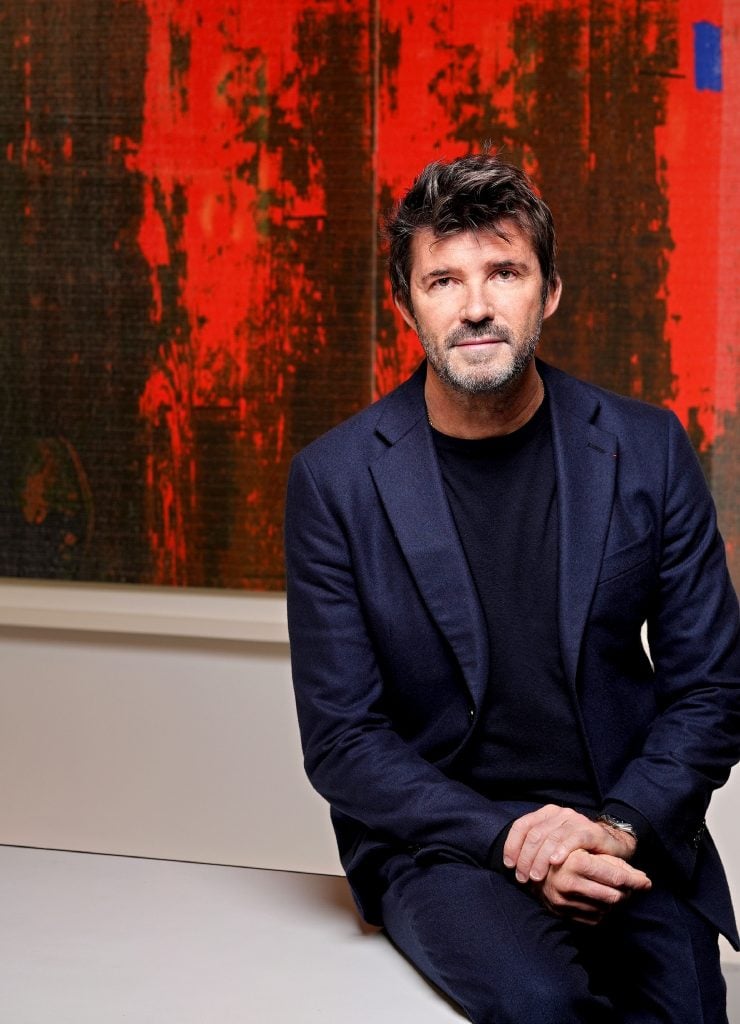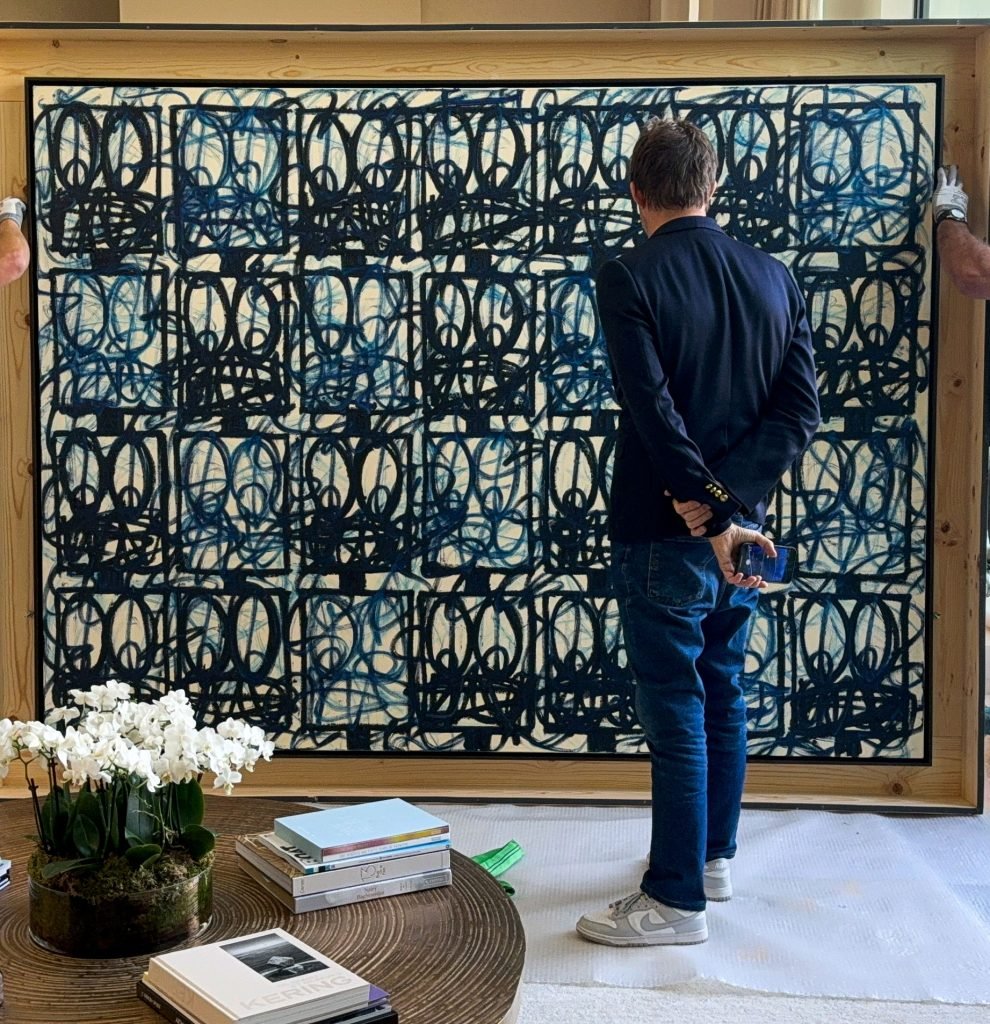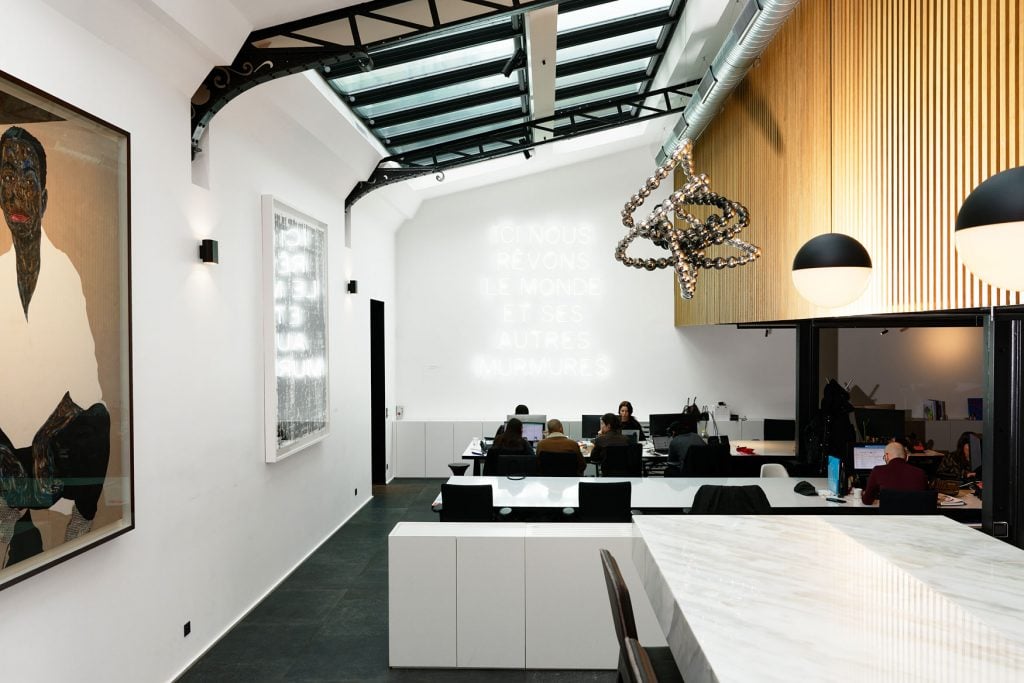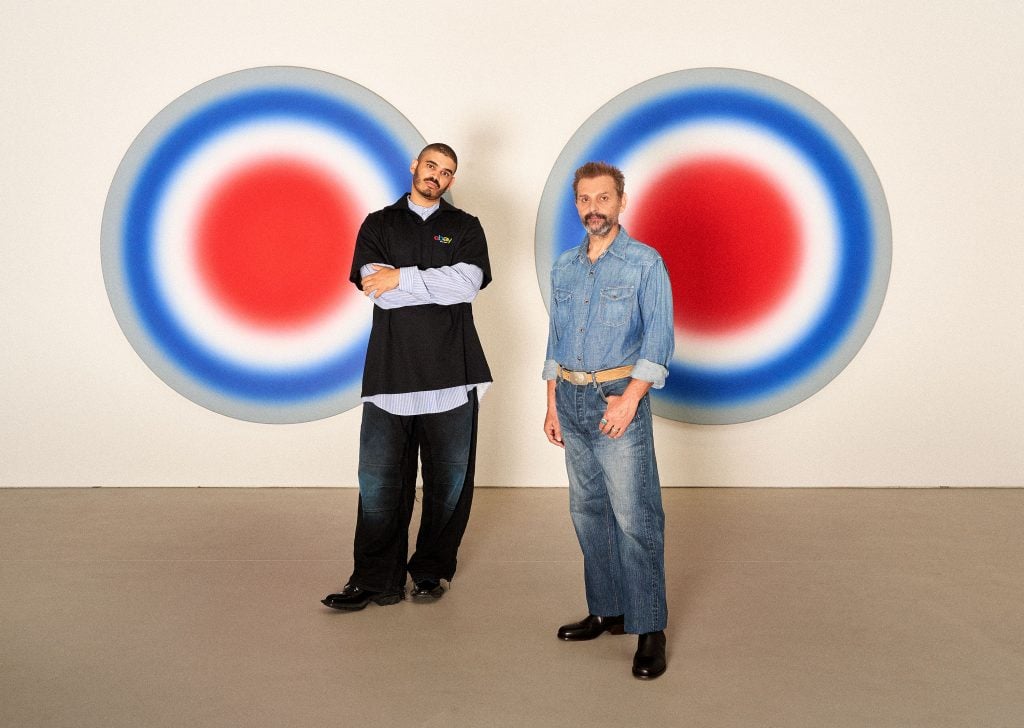Art Collectors
Paris-Based Collector Paul-Emmanuel Reiffers on Merging the Worlds of Art and Luxury
The collector's foundation will exhibit an Ugo Rondinone-led collaboration during Art Basel Paris.

Working at the intersection of art and luxury, there is perhaps no more accomplished liaison than the French entrepreneur and collector Paul-Emmanuel Reiffers. Finding the frisson between the two realms is his raison d’être as the founder and CEO of Mazarine, a bespoke creative agency that has partnered with some of the world’s most exclusive luxury brands including Louis Vuitton, Dior, Loewe, Balenciaga, and Gucci.
“There’s always been a strong connection between art and luxury, now more than ever,” said Reiffers sitting in his art-filled Paris home (Mazarine’s offices, too, are filled with paintings and sculptures culled from his collection). “Artistic directors are at the top of their brands and they want to work with artists at the top of their game as well,” he mused. “Not only do they want to partake in traditional formats like fashion shows, they also want to have a say in high-profile contemporary art projects.”

Collector Paul-Emmanuel Reiffers with Rashid Johnson’s Bruise Painting (2021) in his Paris home.
Reiffers’s recent acquisition of Arter, the artistic events production company behind exhibitions for the Fondation Louis Vuitton (in particular, the Henri Matisse and Ellsworth Kelly shows) and the Musée Saint Laurent, as well as the French pavilion at the Venice Biennale, further solidifies his collaborative vision. Arter joins other cultural enterprises under the Mazarine banner including Numéro magazine and its sister publication Numéro Art.
From Classical to Conceptual
As the relationship between art and luxury has grown since the turn of the new millennium, so too has Reiffers’s personal collection. Initially, in the 1990s, he purchased “classical works” by artists of the lionized sort—think Alexander Calder, Lucio Fontana, Louise Bourgeois, and French artist Pierre Soulages. His philosophy soon evolved, however, to include abstract and conceptual artists along the lines of Wade Guyten, Rudolf Stingel, and Christopher Wool.

The Mazarine office in Paris, featuring works by Amoako Boafo, Emilie Benoist, and Jean-Michel Othoniel from Reiffers’s personal collection. Photo: Aurelien Mole.
Reiffers then had an epiphany. “I used to think of myself as only a collector, but I began to wonder if that was enough. I started to see collecting as a means of supporting artists,” he said. “So I got involved with a group of Black American artists who are dealing with the most urgent issues of our day.” Rashid Johnson, David Hammons, Glenn Ligon, and Simone Leigh were among the artists he sought out. His most recent purchase, and the one he considers his most important, is a tarp painting by Hammons from 2007, in which the artist salvaged materials from the street in an indictment on American poverty. “It’s simply a masterpiece,” asserted Reiffers, who also acquired six pieces by Johnson, one from the artist’s “Anxious Men” series in red. For Johnson’s retrospective at the Guggenheim in New York next year, Reiffers will lend multiple pieces from his collection.
The pandemic further shifted Reiffers’s attention to the struggles of French artists. “My feelings about collecting continued to evolve. I can buy a major painting or sculpture, but for what?” he said. “So in 2021, I launched a foundation, Reiffers Arts Initiative, not to exhibit my collection, but to support the new generation of French artists coming up. As a French person, I think it’s important to support local artists, much like Americans do. It’s part of my responsibility as a French entrepreneur to support and buy French art.”
The main thrust of the foundation is an annual mentorship program pairing a major name from Reiffers’s collection with a young artist from the French-speaking world. “When you’re a collector,” said Reiffers, smiling, “you can ask for things.” He enlisted Rashid Johnson as the first mentor, who picked the Guadeloupean artist Kenny Dunkan as his mentee. Following mentors have included Lorna Simpson and Kehinde Wiley.

Tarek Lakhrissia and Ugo Rondinone for Reiffers Arts Initiative 2024.
Ugo Rondinone has the honor for the 2024 edition. Rondinone entered Reiffers’s orbit with the purchase of two of the artist’s earlier pieces, a vibrant circular painting and a rock sculpture carved from bluestone.
Rondinone chose the French-Moroccan multidisciplinary artist and poet Tarek Lakhrissia, whose practice addresses the socio-political conditions of queer and immigrant communities. He was chosen from a shortlist narrowed down by a committee that includes representatives from the Fondation Cartier, the Pinault Collection Bourse de Commerce, and the Fondation Louis Vuitton. “Ugo is not only an incredible artist, he also thinks like an artistic director. He’s created an immersive environment to showcase Tarek’s work,” Reiffers said. The resulting exhibition— which opens October 15 at the Acacias Art Center, timed with Art Basel Paris—will be “the largest and most significant event I’ve ever produced for an artist.”
“It’s a really big deal for these young artists to get this level of visibility,” Reiffers added. “We get a lot of press, invite important curators and advisors, publish a book, and produce a major exhibition at the Reiffers Art Center in the center of Paris during Art Basel. We invite all the most important galleries worldwide to visit the exhibition, allowing the artist to potentially connect with an international gallery, which is our chief aim.”
Combined, Art Basel has become Reiffers’s stomping grounds on the international art fair circuit. “They always have incredible pieces because it’s such an important art fair. I love to visit the booths of my favorite galleries like David Zwirner and Hauser & Wirth. I’m very close to Hauser because I have a lot of artworks from there, as well as French galleries Kamel Mennour, Perrotin, and Balice Hertling. I love discovering new artists through them. You have to take a chance when they’re still developing.”
“But what matters most is the connection you have with a work,” he continued. “I remember five or six years ago at Art Basel Miami, I was surrounded by all these beautiful pieces, but I was drawn to a small Ed Ruscha painting. It wasn’t big or considered very important, but I loved it. I couldn’t stop thinking about it and eventually, on the last day, decided I had to have it. It was a painting of a boat, and while I can’t explain why, it was an emotional connection. That’s what art is all about.”





